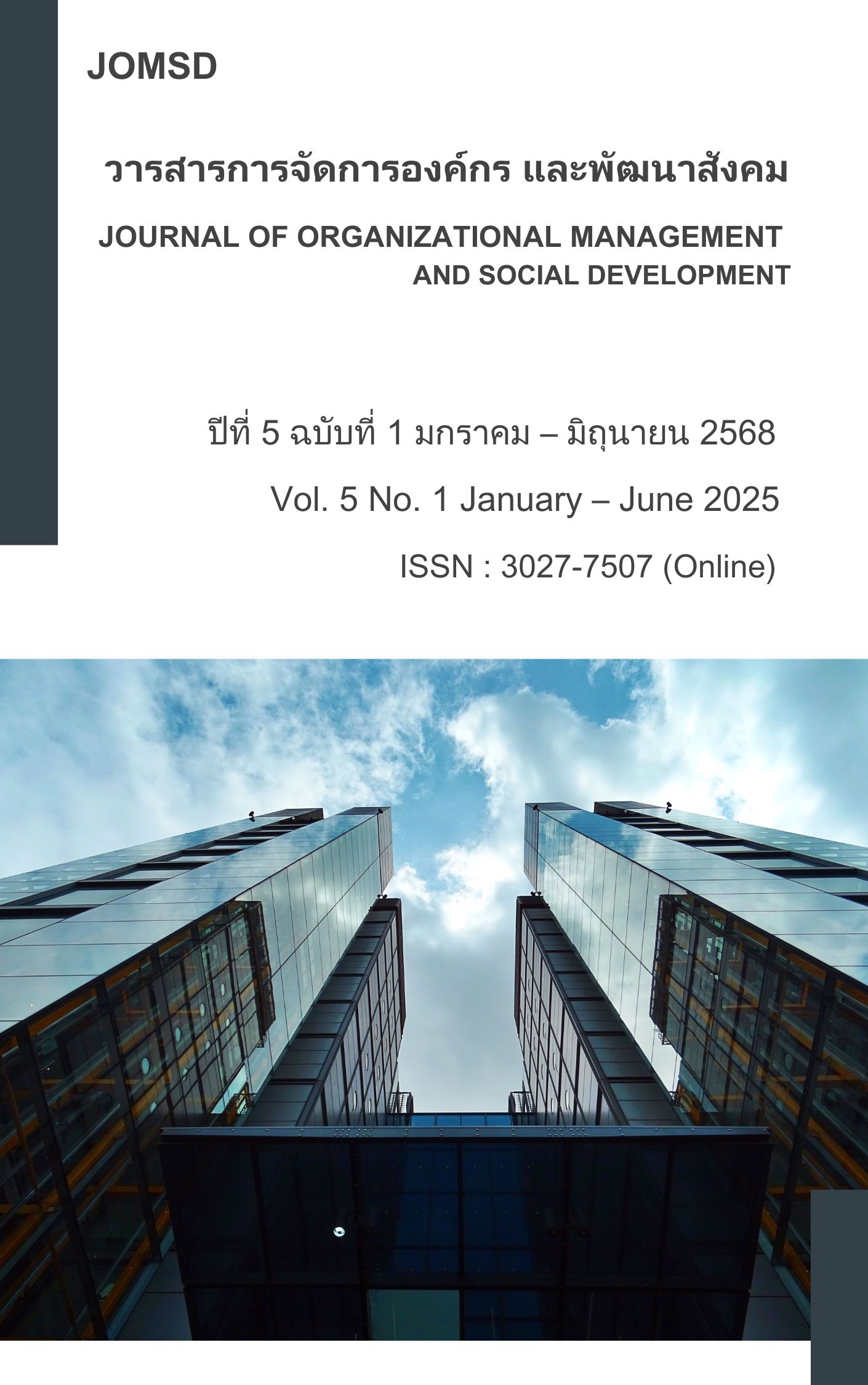A Development of Student Discipline Based on Sappurisa Dhamma of Banhouymood School Under Suratthani Primary Educational Service Area Office 3
Main Article Content
Abstract
The purpose of this research is to 1) study the development of student discipline at Ban Huai Mud School, under the Surat Thani Primary Educational Service Area Office 3; 2) explore ways to develop student discipline according to the principles of the Seven Noble Virtues; 3) evaluate the results of student discipline development based on the Seven Noble Virtues. This study is action research, targeting a group consisting of 15 main informants, 5 experts, and 22 follow-up participants. The research tools include in-depth interviews, expert interviews, and behavioral observation. Data analysis was conducted using percentages, means, standard deviations, t-values, and descriptive statistics. The research findings indicate that 1) the status of student discipline development encompasses four areas: (1) Responsibility: the school has clear rules and organizes promotional activities, but some students still lack awareness of their duties; (2) Self-confidence: although the school supports students, some still hesitate to express themselves due to fear of failure; (3) Compliance with rules: some students exhibit inappropriate behavior or lack good role models; (4) Patience: some students lack training or have been overly indulged. 2) The PAOR2 cycle was used, which includes planning, acting, observing, and reflecting. In the first round, strengths and weaknesses were analyzed, and activities were defined according to the principles of the Seven Noble Virtues. In the second round, activities were adjusted based on evaluation results, with teachers leading and reinforcing motivation, and a meeting was held to summarize sustainable approaches. 3) The results of the discipline development revealed that the students' discipline significantly improved after the intervention at the .05 level of statistical significance.
Article Details
References
กระทรวงศึกษาธิการ. (2551). หลักสูตรแกนกลางการศึกษาขั้นพื้นฐาน พุทธศักราช 2551. กรุงเทพฯ: สำนักงานคณะกรรมการการศึกษาขั้นพื้นฐาน.
ธนวัฒน์ ศรีวิชัย. (2563). การส่งเสริมวินัยนักเรียนด้วยหลักพุทธธรรมในโรงเรียนประถมศึกษา. (ครุศาสตรมหาบัณฑิต, มหาวิทยาลัยราชภัฏเชียงใหม่).
พระสามารถ จตฺตมโล, (2563) การพัฒนาคู่มือการจัดการเรียนรู้ตามหลักสัปปุริสธรรม 7 เพื่อผลสัมฤทธิ์ของนิสิตระดับปริญญาตรี วิทยาลัยสงฆ์สุพรรณบุรี ศรีสุวรรณภูมิ. (ครุศาสตรมหาบัณฑิต, มหาวิทยาลัยมหาจุฬาลงกรณราชวิทยาลัย.
ศรชัย เกษมสุข. (2564). การพัฒนารูปแบบการเสริมสร้างวินัยในตนเองของนักเรียนโรงเรียนบางเลนวิทยา. (ศึกษาศาสตรมหาบัณฑิต, มหาวิทยาลัยศิลปากร).
ศุภวรรณ ทองลาด. (2564). การพัฒนาแนวทางการเสริมสร้างวินัยในตนเองของนักเรียน สังกัดสำนักงานเขตพื้นที่การศึกษาประถมศึกษากาฬสินธุ์ เขต 3. (การศึกษามหาบัณฑิต, มหาวิทยาลัยมหาสารคาม).
สำนักงานรับรองมาตรฐานและประเมินคุณภาพการศึกษา (องค์การมหาชน). (2561) มาตรฐานการศึกษาขั้นพื้นฐาน ด้านคุณภาพผู้เรียน (ฉบับปรับปรุง พ.ศ. 2561). กรุงเทพฯ: สำนักงานรับรองมาตรฐานและประเมินคุณภาพการศึกษา (องค์การมหาชน).
สำนักงานเลขาธิการสภาการศึกษา. (2545). พระราชบัญญัติการศึกษาแห่งชาติ พ.ศ. 2542 และฉบับที่ 2 พ.ศ. 2545. (พิมพ์ครั้งที่ 5). กรุงเทพฯ: พริกหวานกราฟฟิค.
สำนักงานเลขาธิการสภาการศึกษา. (2560). แผนการศึกษาแห่งชาติ พ.ศ. 2560–2579. กรุงเทพฯ: สำนักงานเลขาธิการสภาการศึกษา.
สำนักงานสภาพัฒนาการเศรษฐกิจและสังคมแห่งชาติ. (2561). ยุทธศาสตร์ชาติ 20 ปี (พ.ศ. 2561–2580). กรุงเทพฯ: สำนักนายกรัฐมนตรี.
Bandura, A. (1986). Social foundations of thought and action: A social cognitive theory. Englewood Cliffs, NJ: Prentice-Hall.
Bandura, A. (1997). Self-efficacy: The exercise of control. New York: W.H. Freeman and Company.
Kohlberg, L. (1981). The Philosophy of Moral Development: Moral Stages and the Idea of Justice. San Francisco: Harper & Row.
Mezirow, J. (1991). Transformative dimensions of adult learning. California: Jossey‑Bass.
Mischel, W. (1972). Cognitive and attentional mechanisms in delay of gratification. Journal of Personality and Social Psychology, 21(2), 204–218.
Santrock, J. W. (2018). Adolescence. (17th ed.). New York: McGraw-Hill Education.
Skinner, B. F. (1953). Science and human behavior. New York: Macmillan.
Wigfield, A., & Eccles, J. S. (2000). Expectancy–value theory of achievement motivation. Contemporary Educational Psychology, 25(1), 68–81.

